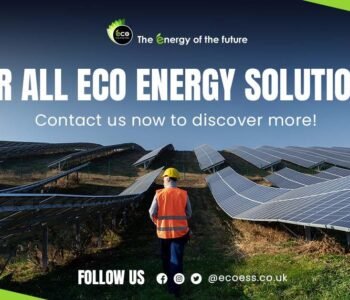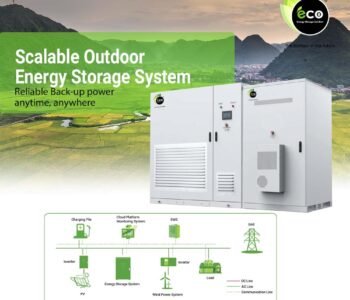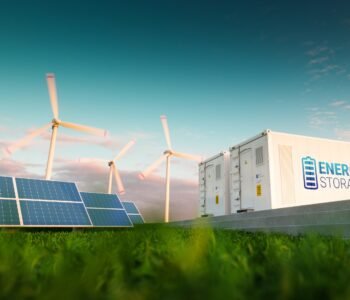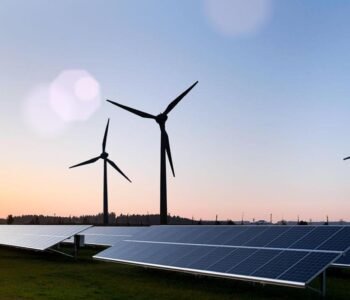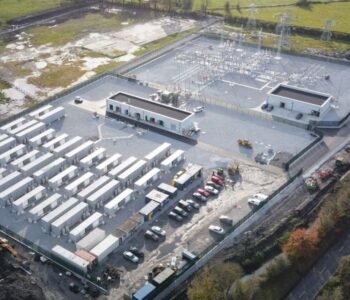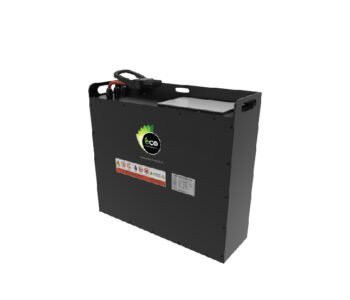 Energy Storage Solution
Energy Storage Solution
Renewable Energy merits and drawbacks in application for Masses
By Khubaib Khan – Director ECO ESS Ltd. UK
Dark clouds and faded greenery are asserting openly and challenging to the humankind if you don’t awaken then get ready for more strikes – bad to worse breathing atmosphere has become the anti-body free of cost silent killer for many and despite of a buzz we don’t wake up.
Shielding of the atmosphere & our surroundings is the responsibility of the individuals but not only for the authorities. Let’s contribute by changing this unpredictable environment into a friendly nature. Handful Cos. in the UK, EU and USA have been contributing towards clean energy and swapping fossil fuels energy by renewable energy and sustainable energy that’s ultimately directing towards Zero CO2 emission. We all must be ambitious in this expedition and say let’s promote renewable energy and store valuable energy for better tomorrow, for the world & for the generation to come. In Unies, colleges and schools, we must add a line in title of their text books and notes – “Save the earth and save the nature by going green”.
With my immense research work, I identified that strong loophole persists in implementation and awareness of renewable energy on the mass level, despite of the loud slogans, activates, COP26 agenda, meetings, exhibition, seminars incentive schemes, big talks in developed countries specially in the EU, UK and in the USA. Ironically, Asia & Africa are unaddressed except China where the pollution and CO2 are its max. level of this era.
Green West does not nuisance for the polluted Asian & African atmosphere. Policies have been drafted, PM of few countries and their legislatives are in scene but reality is, their own progress is slow indeed and least public awareness being generated. Mega projects for renewable energies are in hands of few. The supplier i.e. manufacturer and buyer’s bond is stiff enough that the small Pvt. sector cannot courage to jump into this sector. Funds are for those Cos. who are the giant and can build-up mega project but what about small enterprises and individuals – how to encourage them? Is a valid question.
The major types of renewable energy sources are:
In this instance, I started asking my peers and industries fellows including capitalist and Tycoons of Gigawatt-projects owners what is the solution of slow coach towards decarbonisation? Why the hydraulic and Biomass / Waste energy cannot be the replacement?
Answer is unanimous, ‘most of the nation cannot afford hydraulic energy since don’t have much infrastructure and water flows and waste energy is another CO2 source somehow’. Compressed natural Gas is disputed – either its free from CO2, better than fuel or its lesser harmful than others fossil fuels. Thermal energy is also in doubt too either it is the best source for energy production or harmful to humankind? Blue energy is practically in fantasies and theories and in hand of few generalists and with money makers & markets. No one has seen blue energy so far, their actual form and how it can be generated. In fact, blue energy is just a theory and not coming to the practical review anywhere except in few texts.
Therefore, Long duration Energy Storage Solution (ESS) is needed to substantiate the Renewable Energy for masses either extracted by Wind or by Solar energy. One of the best option and solution is Lithium Titanate Battery for individual houses from 3KW/h to 10KW/h. Though, LTO is relatively costly but pays off its cost in few years since life cycle is 30+ years. LTO is the safest, fastest and highly efficient ESS in both charging and discharging states. But LFP realistically is the economical solution as of today. It is the best option for individual houses, small industries, farm houses, machineries, backups etc even for EV and Electric cars can rely on this Li Ion form. This is another topic as a whole that prices are being rocketed and one could say this is due to the demand vs. supply. But questions are raised on Li Ion batteries as well – Millions of boxes where to be dumped after their usage and expiry or it’s another add on to the pollution and destroying the nature. Answer was received – these are minerals or synthetically produced molecules and can be dumped to the nature earth from where they originated – answer is elementary and needed further debate since Govt of UK have published 100s of pages on Li Lion batteries where and how to dump safely after their expiry – these good deeds with good intention by UK Gov. raised 10s of questions spontaneously.
In my strong opinion, Westerns Govts must ponder on the LFP factor till the time energy distribution should emerge from the alternative mega solar plants along with wind parks. Automobility has to run on the aid of these Li Ion batteries since they don’t have other option so far in this era unless something originated from the surface to replace these powerful and long-lasting Li Ion batteries.
I had extracted few excellent articles and quotes which are self-explanatory and would clarify the picture which is gloomy but foggy as far as commercial part is concerned and needed a lot of attention from top world-wide think tanks – if not today then get ready to face rebellious nature tomorrow in form of more shocks, jolts, floods, tsunami, drought, hunger, poverty and faded nature. (God forbid)
“Renewable energy has come a long way in the past decade, and it’s still trending upward going into 2022. These days, “carbon-efficient, all-natural” energy is the norm, incorporated into everyday life with an irreversible effect on society.
The International Renewable Energy Agency (IRENA) names renewable energy the backbone of global development and climate strategy.
In other words, our world has become dependent on renewable energy. Production has increased exponentially and the world has doubled its capacity over the past decade. But the main contributor to renewable energy’s success is the way in which we store that energy. It has an enormous shelf life, which increases demand.
In fact, this growth will increase by 13 times in grid-scale storage by 2024.
This is a monetary equivalent of $71 billion.
Global Market Insights sees energy storage systems reaching $500 billion by 2025.
Energy storage including lithium batteries, solar panels, and microinverter-based storage systems allows this renewable energy boom to continue.
Not to mention energy storage also allows for a massive opportunity to enter the market in a very solid and secure way.
And I happen to have three red-hot energy storage stocks that can get you started in profiting from the renewable energy industry.”
Sorce: by wealth daily
“The energy storage industry should play a proactive role in supporting market development in Southeast Asia, a panel discussion at the Solar and Storage Finance Asia event heard this week, from Aquila Capital regional CEO Alexander Lenz. We speak exclusively with Yaron Ben Nun, CTO and founder of Nostromo, a start-up aiming to commercialise a new ice-based energy storage for cooling buildings and Yaron is adamant that it can turn electricity demand for commercial buildings into a powerful tool of the energy transition. US independent power producer Talen Energy has hired developer Key Capture Energy to work on a battery project at one of its coal power plant sites in Maryland, as Talen pursues its new ESG-driven path. Koch Industries, another name more commonly associated with fossil fuels, has invested in zinc-based energy storage company Eos, through its Koch Strategic Platforms investment vehicle. The UK’s Flexion Energy has gained a US$200m+ investment commitment from an infrastructure investment group as it targets development of a 1GW battery storage portfolio and in South Australia, developers Maoneng and SAPGen are seeking permission to construct 465MW of large-scale battery storage, solar-plus-storage projects behind-the-meter and in front-of-the-meter make progress in Hawaii. Finally, we round up some news about investors acquiring three US solar and storage developers, which could be a sign of things to come.” By Andy Colthorpe
AN ENERGY SYSTEM ON THE BRINK OF TRANSFORMATION
“The global transition to renewable energy has been accelerating worldwide, driven by the urgent imperative to address the climate emergency and increasingly favourable economics.
This has been supercharged by the impact of the Covid-19 pandemic, creating unique conditions to accelerate the transition, with the IEA recognising that renewable energy, such as wind and solar, showed ‘a degree of immunity to the crisis’.1 The temporary acceleration of the share of renewable energy driven by Covid-19 has fixed the eyes of the world’s energy leaders on the opportunity to realise the potential of renewables to reduce emissions, permanently. The UK is one such test-case.
The UK Prime Minister has increased the Government’s offshore wind target from 30 GW to 40 GW by 2030 and pledged that offshore wind will power every home in the country in that time. This will form a keystone in the country’s path to a net zero energy system.
The UK Government will soon release its energy white paper, detailing its strategy for the coming decade and beyond. This is an opportunity to set an ambitious target for renewable energy to become the primary source of power by 2030. In 2019, the UK energy system reached 37% renewable energy.
By 2030, modelling undertaken by Wärtsilä shows that the country could easily achieve a permanent 62% renewable generation, even with the energy system as it is today. The country should go further, setting a target to achieve 80% renewable energy by the end of the decade. That may sound ambitious, but it is realistic. During the initial Covid-19 lockdown, when energy demand fell by up to 10%, the energy system as it is today coped with up to 60% renewables for short periods. Energy systems in other European countries, such as Germany and Spain, achieved over 70% renewable energy. If current systems can manage major spikes of renewable energy today, then – as this report shows – with investment in technologies that add system flexibility, we can be confident to set ambitious targets for permanently higher levels of renewables in the near future.”
Source: Wärtsilä Energy Transition Lab Report by Ville Rimali Growth & Development Director
The question of bankability: From tech to revenue model
Laurent Segalen states that “from a financial point of view, li-ion batteries are now a fully bankable technology. World-class providers like Fluence and Tesla are delivering new products with up to 20,000 cycles and above 90% round-trip efficiencies. And lithium ferro phosphate (LFP), with its lower cost and reduced fire risk, seems now the chemistry of choice for stationary storage.
Now that the technology aspect has been sorted, how can the revenue model of stationary storage become bankable? Contrary to wind and solar, batteries don’t typically benefit from long-term secured revenues, such as power purchase agreements (PPAs).
Instead, investors in storage need to deal with several types of revenues (arbitrage, grid services, reserve) which are difficult to model. Even more important, capturing those new revenues relies on implementing ever-improving software that maximise the monetisation of the numerous market opportunities but can be often seen as “black boxes” by investors.
The software race is on. Against Tesla’s Autobidder, you see Fluence acquiring AMS to provide an integrated hardware + software solution. That new software is incomparably more suited to optimise battery assets than human traders. For instance, in Australia, the new market design has created five-minute bidding windows: the best human trader will post 15-20 trades a day, whereas the software will be able to bid 288 times (12 bids per hour x 24h).” Published in Financier, renewable energy transactions.
Summary: I could sum up in below sentences.
The renewable energy problem:
There are some days when;
- the sun doesn’t always shine, and
- the wind doesn’t always blow.
- And then there are days when these happen for extensive periods.
- This causes intermittency & variability of your renewable energy generation.
The natural environment has a massive impact on the balancing capability of renewables. Which often results in decreased commercial capability of your renewable assets.
How can we increase the capability of renewable assets?
Grid scale storage solutions
By applying unique storage expertise into renewable energy generation projects, one can transform the value of your assets, ‘get a detailed roadmap for your route to the market and achieve your goals.’
Why Do You Need a Solar Battery Storage System?
Pairing solar batteries with solar arrays is a relatively new practice, but an effective one. You can benefit from solar battery storage in 4 key ways:
- Store energy for later use
- Significantly lower your energy costs
- Earn money by selling stored energy to the grid
- Become independent from the grid
Firstly, a solar battery stores the energy generated during sunlight hours and makes it readily available for use during non-production hours, such as at night or on cloudy days, essentially enabling your home to run on 100% renewable solar energy around the clock, as long as electricity demand does not exceed the supply that the battery can provide.
In addition, solar battery backup power can lower your energy costs significantly. By charging the solar battery during off-peak hours and discharging it during peak hours, you can avoid paying a lot for electricity from your utility company. The savings from this can serve towards reducing your battery system costs.
What’s more, you can earn money by selling the energy stored in your solar battery back to the electrical grid when electricity prices are at their highest—if your utility allows net metering.
Finally, by adding a solar panel battery to your solar system, you can choose to be independent from the national grid at any time, thereby ensuring energy security for your household. Naturally, the how many solar panels you need to install for this will vary depending on your energy demands and budget.
Source: Green Match
